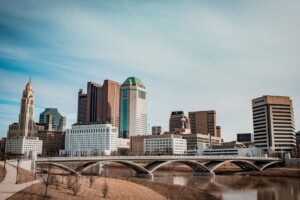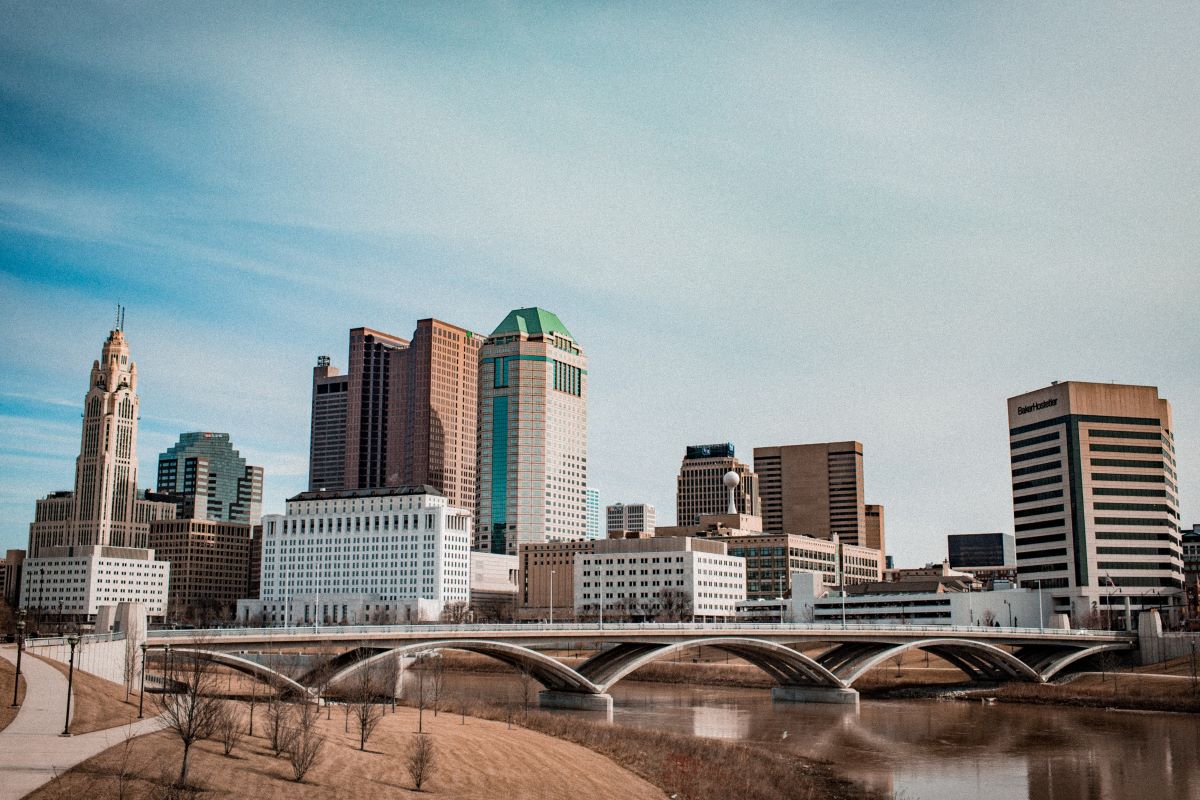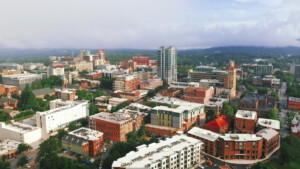Is Columbus, OH a Good Place to Live? 10 Pros and Cons to Consider

Despite receiving considerably less attention than cities like Cleveland and Cincinnati, Columbus, is actually Ohio’s largest city by population. There are plenty of elements that make living in Columbus increasingly popular, from its affordable cost of living to the abundance of outdoor recreation. However, like any city, it’s not without its drawbacks. Whether or not you want to move here will depend on how you weigh the various pros and cons. So if you’re considering renting an apartment in Columbus or browsing homes for sale in the city, read on to determine whether Columbus is a good fit for you.

Pros of living in Columbus
1. The cost of living in Columbus is relatively low
Columbus is known for its relatively affordable cost of living compared to other major cities in the United States. For example, living expenses in Cincinnati are 7% more expensive compared to Columbus, and in Chicago, the cost of living is 34% higher than in Columbus… Additionally, the city has lower-than-average housing costs, with median home sale price around $248,200, well below the national average of $386,527.
2. Columbus has a thriving job market
The Columbus job market is thriving, with a diverse range of industries and companies offering employment opportunities for job seekers. The city is home to several large employers in fields such as healthcare, finance, insurance, and retail, including Nationwide Mutual Insurance, JPMorgan Chase & Co, and OhioHealth. The technology sector is also rapidly growing in Columbus, with startups and established companies alike choosing the city as a hub for innovation and expansion. The city’s low cost of living and high quality of life also make it an attractive destination for both job seekers and employers.
3. There are plenty of cultural attractions in the city
Columbus boasts a rich cultural scene with a variety of attractions for locals. The city is home to the renowned Columbus Museum of Art, which showcases a wide range of exhibitions, including contemporary art, photography, and folk art. Additionally, the Ohio Theatre is a stunning venue for performing arts and regularly features Broadway productions and other touring acts. The Franklin Park Conservatory and Botanical Gardens offer a tranquil oasis in the heart of the city, with a variety of indoor and outdoor exhibits that showcase exotic plants from around the world. For history enthusiasts, the Ohio History Center provides a comprehensive look at Ohio’s past, with exhibits on everything from prehistoric animals to the state’s role in the Civil War. Lastly, the city’s vibrant food scene provides a unique cultural experience, with a diverse range of restaurants and food trucks featuring cuisine from around the world.

4. Columbus has no shortage of sports teams to cheer for
Sports play a significant role in the culture of Columbus, Ohio, with numerous professional and collegiate teams representing the city. The Ohio State Buckeyes football team is a perennial powerhouse in college football, boasting a passionate fan base that fills Ohio Stadium to capacity for every home game. The Columbus Blue Jackets of the National Hockey League (NHL) provide exciting action on the ice, while the Columbus Crew of Major League Soccer (MLS) has won several championships and is beloved by the local soccer community. Additionally, the city is home to the Columbus Clippers, a minor league baseball team, and the Ohio Machine, a professional lacrosse team. Beyond professional sports, Columbus also hosts numerous amateur and youth sports events throughout the year, including marathons, cycling races, and youth sports leagues.
5. Outdoor activities are plentiful in Columbus
Columbus, Ohio offers a wide variety of outdoor activities for nature enthusiasts, families, and adventure seekers alike. The city’s metro parks system includes over 20 parks and nature preserves with miles of trails for hiking, biking, and running. The Scioto Mile is a scenic trail that runs along the Scioto River, offering stunning views of the city skyline and access to a variety of outdoor events throughout the year. The Columbus Zoo and Aquarium is a world-renowned attraction that offers a unique outdoor experience, featuring over 10,000 animals and multiple outdoor exhibits. For those looking for more extreme outdoor activities, the Olentangy River offers opportunities for kayaking and canoeing, while the nearby Hocking Hills region features stunning natural formations and rock climbing. In the winter months, the city offers ice skating rinks, cross-country skiing trails, and even a toboggan run at the nearby Mad River Mountain.
Cons of living in Columbus
1. Columbus has higher tax rates than other major cities
One of the potential downsides of living in Columbus is the higher tax rates. The city imposes a city income tax of 2.5%, which is in addition to the state income tax of 5%. Property taxes are also higher compared to other cities in Ohio. While these taxes help fund city services and infrastructure, they can be a burden for some residents, particularly those on a fixed income or with lower salaries. Furthermore, Columbus has a 7.5% sales tax rate, which is higher than the state average of 5.75%. The higher tax rates can make the cost of living in Columbus more expensive than other cities in Ohio, which may be a consideration for those on a tight budget.

2. Harsh winters are common in Columbus
Columbus, Ohio experiences harsh winters with cold temperatures and frequent snowfall. The average winter temperature in Columbus is around 30 degrees Fahrenheit, with occasional dips into the single digits. Snowfall is also common, with an average of around 28 inches per year. During heavy snowfall, it is not uncommon for residential streets to be left unplowed for a period of time. Additionally, the cold temperatures and snow can create hazardous conditions for drivers and pedestrians alike, with black ice and snow-packed roads posing a risk for accidents. Despite the challenges of winter weather, Columbus offers a variety of indoor activities and events to keep residents and visitors entertained during the colder months, such as museums, theaters, and shopping centers.
3. Air quality can be a concern during the summer months
Air quality in Columbus can be a concern during the summer months, particularly for individuals with respiratory conditions. The city’s location in the Ohio River Valley and its proximity to coal-fired power plants can lead to elevated levels of ozone and particulate matter in the air. The Ohio Environmental Protection Agency (EPA) monitors air quality throughout the state and provides daily updates on its Air Quality Index (AQI), which rates air quality on a scale from 0 to 500. The AQI is often elevated during hot and humid summer days, when sunlight and heat can cause pollutants to react and form ground-level ozone. However, the city has taken steps to improve air quality, such as implementing green infrastructure and promoting public transportation to reduce vehicle emissions. Despite these efforts, individuals with respiratory conditions may want to take precautions during times of elevated AQI, such as limiting outdoor activities during peak hours and staying indoors in air-conditioned environments.
4. Columbus’ nightlife pales in comparison to other cities
Columbus, Ohio is a vibrant and growing city, but its nightlife scene is often considered limited compared to larger cities. While there are a variety of bars, pubs, and nightclubs throughout the city, the overall number and diversity of options may not match that of larger metropolitan areas. Additionally, many of the nightlife options in Columbus are concentrated in the downtown area, leading to a sense of overcrowding and limited variety.
5. Rapid population growth is causing the city to become more crowded
Columbus’s rapid expansion has led to increased traffic congestion and longer commute times for some residents. The city’s suburban areas have grown significantly in recent years, which has created challenges for city planners who must balance the need for growth and development with preserving the city’s natural resources and urban character.
The post Is Columbus, OH a Good Place to Live? 10 Pros and Cons to Consider appeared first on Redfin | Real Estate Tips for Home Buying, Selling & More.




